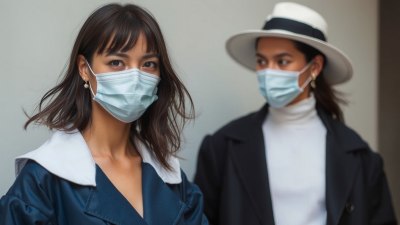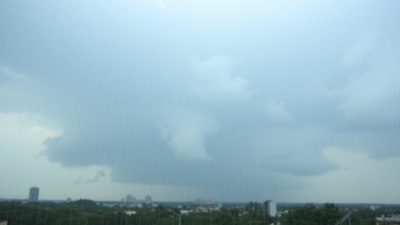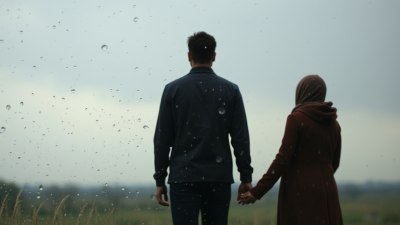How Heatwaves Turn Fashion into Strategy
Explore how rising heatwaves reshape fashion into a strategic tool blending comfort, sustainability, and innovation.

Heatwaves are no longer occasional weather phenomena; they are a growing global challenge that affects multiple aspects of daily life, including the fashion industry. As temperatures soar and prolonged periods of extreme heat become the norm, fashion is evolving from mere aesthetic expression into a strategic response addressing comfort, sustainability, and health concerns. This transformation is not just about style but a comprehensive approach that integrates material science, design innovation, and consumer behavior to meet the needs of a changing climate.
The Rising Heatwave Challenge and Its Impact on Fashion
Heatwaves, defined as prolonged periods of excessively hot weather, have increased in frequency and intensity worldwide. Urban heat island effects, climate change, and environmental degradation all contribute to elevated temperatures, causing discomfort, health risks, and environmental stress. For the fashion industry, this means rethinking garments traditionally designed for visual appeal over functionality. Heat causes fabrics to cling to the skin, increase sweat retention, and may even exacerbate heat stress conditions, making conventional clothing inappropriate in many regions.
Moreover, the pressure to stay fashionable without compromising comfort creates a new dynamic in clothing choice. Consumers demand outfits that allow breathability, UV protection, and moisture management. This has prompted designers and manufacturers to innovate beyond traditional fabrics and cuts, to strategies that optimize thermal management without sacrificing style.
Material Innovation: The Core of Heatwave-Ready Fashion
One of the major avenues through which fashion turns strategic is via new materials engineered to combat heat. Natural fibers such as linen, cotton, and bamboo have gained renewed interest due to their breathability and moisture-wicking properties. These fibers allow air circulation and aid evaporation of sweat, cooling the skin naturally.
Beyond natural fabrics, technical textiles are leading a revolution. These include fabrics with built-in cooling technologies, UV resistance, and antimicrobial properties. For example, phase change materials (PCMs) embedded in garments absorb and release heat to maintain a comfortable temperature. Another innovation is nano-coatings that reflect infrared radiation, effectively reducing garment temperature under direct sunlight.
These technological advances shift fashion from a passive role to an active participant in thermal regulation. It’s not just about wearing lighter colors anymore but about wearing clothes that intelligently respond to environmental conditions, with design and material carefully calibrated to enhance comfort.
Design Strategies: Form Meets Function
Alongside materials, fashion designers employ innovative cuts, silhouettes, and construction techniques that promote airflow and reduce heat retention. Loose-fitting and layered designs have become prominent, as they trap less heat and increase ventilation. Mesh panels, strategic perforations, and open-back constructions are design elements optimized for cooling.
Furthermore, versatile clothing that adapts to fluctuating temperatures is gaining popularity. Convertible features—such as zip-off sleeves or adjustable hems—allow users to regulate coverage and airflow throughout the day. These multifunctional attributes transform garments from static items into adaptive tools, providing practical solutions aligned with the unpredictability of heatwaves.
Color Choices: Beyond Aesthetic Appeal
Color plays a critical role in managing heat retention in garments. Light colors reflect a significant portion of solar radiation, whereas darker colors absorb more heat, intensifying wearer discomfort. This understanding encourages designers to prioritize light or reflective colors in heatwave collections. However, color choice is not limited to plain whites or pastels; innovative reflective dye technologies permit the creation of varied palettes that still aid temperature regulation.
This strategic color manipulation extends to accessories as well. Hats, scarves, and even footwear are being reimagined with reflective or UV-blocking treatments to provide comprehensive protection against heat and harmful rays.
Consumer Behavior and the Strategic Shift in Fashion
The rising awareness of heatwaves' impact has prompted changes in consumer behavior. People prioritize comfort and functionality alongside style, shifting buying habits toward heat-adaptive clothing. This consumer demand pressures brands to innovate and offer strategic solutions rather than purely fashionable items.
Additionally, the trend toward minimalistic and versatile wardrobes aligns with heatwave preparedness. Consumers are drawn to pieces suitable for various high-temperature scenarios, promoting smarter consumption. This behavior also supports sustainability by reducing excessive purchases and emphasizing quality and adaptability.
Sustainability: A Parallel Strategy
The fashion industry's strategic response to heatwaves also aligns with broader sustainability goals. Heatwave-adaptive clothing often incorporates sustainable materials and production methods. Natural fibers require less energy during production, and technical textiles are increasingly developed from recycled or renewable sources.
Moreover, durability and longevity are emphasized to reduce waste, recognizing that fast fashion conflicts with eco-conscious heatwave strategies. Brands integrate circular economy principles, offering repairable, recyclable, or biodegradable garments designed for high-temperature comfort.
This synergy creates a compelling narrative—fashion that is not only functional and comfortable during heatwaves but also responsible and environmentally sound.
Global Perspectives and Local Adaptations
The impact of heatwaves varies with geography, culture, and lifestyle, influencing local fashion strategies. In hot and humid regions, light, breathable clothing is essential, while dry heat regions may prioritize moisture-wicking and sun protection. Traditional garments often embody heat-adaptive qualities that inspire contemporary designs.
For example, in parts of the Middle East, loose, flowing robes provide both coverage and ventilation, mitigating sun exposure and heat retention. African textiles and styles also offer insights into fabric choice and garment structure suited to intense heat. Fashion strategists incorporate these regional wisdoms into modern collections, blending heritage with innovation to enhance cultural relevance.
Technology and Smart Wearables
The integration of wearable technology furthers fashion’s strategic response to heatwaves. Smart fabrics with sensors can monitor body temperature and sweat levels, providing real-time data for personal comfort management. These garments may adjust their thermal properties automatically, activating cooling mechanisms when needed.
Additionally, some smart textiles incorporate solar cells to harness the sun’s energy, powering portable devices or cooling features embedded in apparel. While still emerging, these technologies demonstrate the potential of fashion as an active participant in addressing heat stress beyond passive clothing.
Heatwaves and Professional Clothing
Heatwave conditions pose significant challenges to professional attire, which traditionally prioritizes formality over comfort. In offices, uniforms, and hospitality settings, heat-adaptive fashion strategies have gained ground. Companies introduce breathable suit fabrics, moisture-wicking underlayers, and shoes designed for ventilation without sacrificing professionalism.
Moreover, uniforms in demanding physical fields like construction or emergency services incorporate specialized materials and designs that prevent overheating while ensuring safety and durability. This intersection of fashion and protection underlines a strategic approach to heatwave resilience in the workplace.
The Role of Policy and Industry Standards
Regulatory measures and industry standards increasingly recognize the importance of heatwave adaptation in clothing. Guidelines promoting workplace safety in high temperatures often mandate the use of heat-adapted apparel, driving innovation and adoption.
Fashion brands and producers also face pressure to meet sustainability certifications and transparency requirements related to material sourcing and environmental impact. These policies reinforce the strategic transformation of the industry, aligning heatwave-responsive fashion with broader societal objectives.
Marketing Heatwave-Ready Fashion
Marketing strategies for heatwave fashion emphasize benefits like thermal comfort, UV protection, and sustainability credentials. Advertisements often showcase real-world scenarios such as outdoor activities, urban commuting in summer, and professional settings, connecting product features to consumer needs.
Storytelling around innovation, heritage, and environmental responsibility builds emotional engagement. Brands leverage social media campaigns, influencer partnerships, and experiential marketing to highlight how fashion transcends style to become a necessary strategy against rising heat.
Challenges and Future Directions
Despite progress, challenges remain in fully integrating heatwave adaptation into every aspect of fashion. Cost constraints, technological limits, and consumer education gaps slow widespread adoption. Some advanced materials are expensive or environmentally contentious, requiring ongoing research for affordable and sustainable alternatives.
Future directions include deeper integration of digital technology, greater cultural inclusivity in design, and expanded collaboration between climate scientists and fashion experts. Innovation in recycling and renewable resources will underpin sustainable, heat-resilient fashion’s growth.
Impact Beyond Clothing: Accessories and Lifestyle
Heatwave strategy extends beyond garments into accessories like hats, sunglasses, and footwear, all designed to combat heat-related discomfort. Specialized cooling scarves, UV-filtering eyewear, and breathable shoes complement the wardrobe, providing comprehensive protection.
Furthermore, lifestyle changes such as smart dress codes and flexible working hours intersect with fashion strategies to minimize heat exposure. The synergy between clothing and broader behavioral adaptations underlines a holistic approach to living well during heatwaves.
Urban Design Influence on Fashion Strategy
The urban environment’s role in exacerbating or mitigating heatwaves influences fashion choices. Dense cityscapes with limited shade demand apparel designed for extreme heat and pollution. Conversely, green urban planning promotes cooler temperatures that impact clothing needs.
Fashion brands are increasingly aware of these environments, tailoring collections for city dwellers facing unique heat challenges. This interaction between urban design and fashion strategy exemplifies how interconnected solutions advance climate resilience.
In conclusion, heatwaves have catalyzed a transformative approach to fashion, positioning it as a strategic tool that marries innovation, comfort, cultural heritage, and sustainability. This evolution reflects a pressing need to adapt to a warming world, where clothing becomes a powerful interface between humans and their changing environment.











